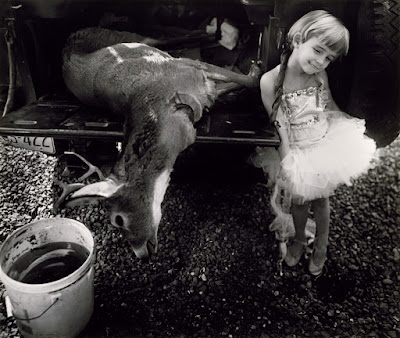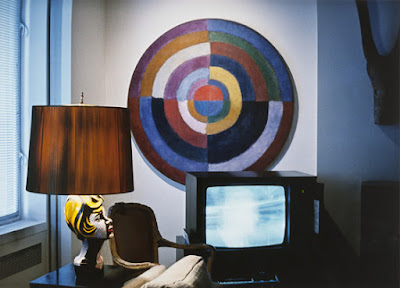 |
| Nicholas Nixon M.A.E. Boston 1985 gelatin silver print Cleveland Museum of Art, Ohio |
 |
| Aldo Sessa Alicia Alonso 1984 gelatin silver print Los Angeles County Museum of Art |
 |
| Jo Spence Phototherapy: Work on Emotional Eating 1984 C-print Princeton University Art Museum |
 |
| Joel-Peter Witkin Portrait of Joel 1984 gelatin silver print Los Angeles County Museum of Art |
 |
| Joel-Peter Witkin Man without Legs, New York City 1984 gelatin silver print Cleveland Museum of Art, Ohio |
 |
| John Coplans Back Torso from Below 1985 gelatin silver print Chrysler Museum of Art, Norfolk, Virginia |
 |
| Michael A. Smith Butler College, Princeton University, New Jersey 1984 gelatin silver chloride print Princeton University Art Museum |
 |
| Sally Mann Jessie and the Deer 1985 gelatin silver print Chrysler Museum of Art, Norfolk, Virginia |
 |
| Richard Misrach Salton Sea (Red) 1985 C-print Nelson-Atkins Museum of Art, Kansas City, Missouri |
 |
| Mark Morrisroe Never More in Love - Jonathan 1984 C-print from Polaroid Princeton University Art Museum |
 |
| Mark Morrisroe Untitled (John S. and Jonathan) 1985 C-print from Polaroid Art Institute of Chicago |
 |
| Reece Vogel Running Figure 1984 tricolor carbro print Los Angeles County Museum of Art |
 |
| Nathan Lerner Orange Wall 1985 C-print Minneapolis Institute of Art |
 |
| Louise Lawler Living Room Corner arranged by Mr & Mrs Burton Tremaine, Sr, New York City ca. 1984-85 C-print Los Angeles County Museum of Art |
 |
| Nan Goldin Untitled 1985 C-print Cleveland Museum of Art, Ohio |
 |
| Ricardo Bloch Venus de Milo, Mexico City 1985 gelatin silver print Minneapolis Institute of Art |
La Gioconda
The presence that thus so strangely rose beside the waters is expressive of what in the ways of a thousand years man had come to desire. Hers is the head upon which all 'the ends of the world are come,' and the eyelids are a little weary. It is a beauty wrought out from within upon the flesh, the deposit, little cell by cell, of strange thoughts and fantastic reveries and exquisite passions. Set it for a moment beside one of those white Greek goddesses or beautiful women of antiquity, and how would they be troubled by this beauty, into which the soul with all its maladies has passed? All the thoughts and experience of the world have etched and moulded there in that which they have of power to refine and make expressive the outward form, the animalism of Greece, the lust of Rome, the reverie of the middle age with its spiritual ambition and imaginative loves, the return of the Pagan world, the sins of the Borgias. She is older than the rocks among which she sits; like the vampire, she has been dead many times, and learned the secrets of the grave; and has been a diver in deep seas, and keeps their fallen day about her; and trafficked for strange webs with Eastern merchants; and, as Leda, was the mother of Helen of Troy, and, as Saint Anne, the mother of Mary; and all this has been to her but as the sound of lyres and flutes, and lives only in the delicacy with which it has moulded the changing lineaments and tinged the eyelids and the hands.
– Walter Pater, Studies in the History of the Renaissance (1873)